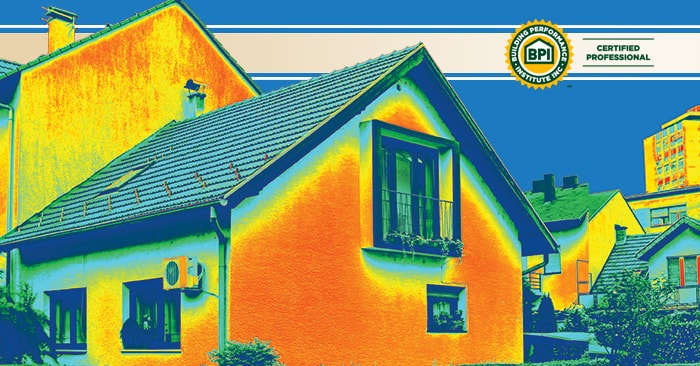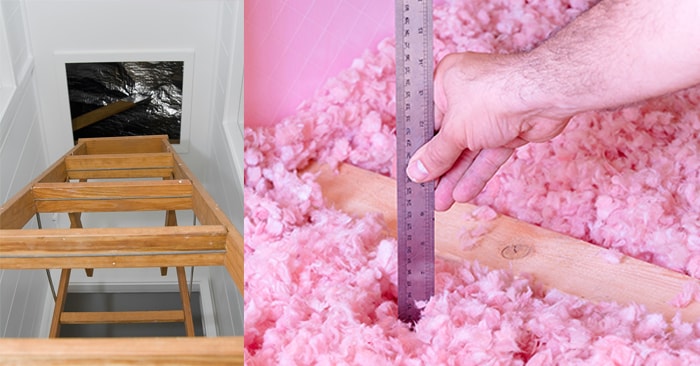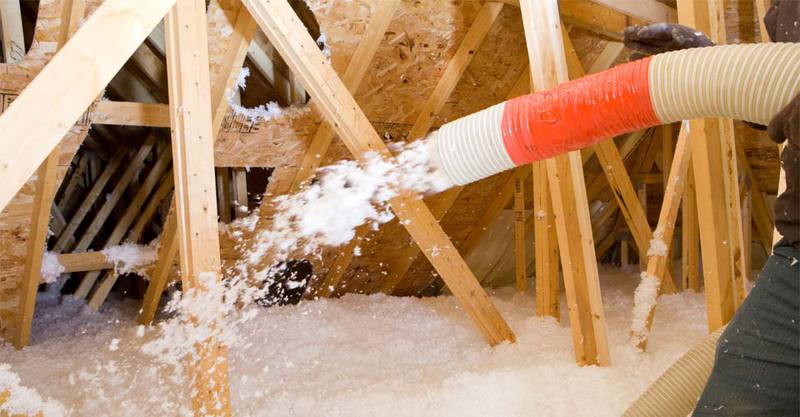Attic Insulation: Air Sealing, R-value, and Insulation Options
by Hoffman Weber Construction, on September 07, 2011
 According to the US Department of Energy, heating and cooling makes up 50% to 70% of energy usage in the average American home. Heating and cooling energy also accounts for the most energy waste due to air leakage and insufficient insulation. Investing in your attic by improving the air seal and adding more insulation can help you keep heated air in your home this winter and ease the burden on your budget.
According to the US Department of Energy, heating and cooling makes up 50% to 70% of energy usage in the average American home. Heating and cooling energy also accounts for the most energy waste due to air leakage and insufficient insulation. Investing in your attic by improving the air seal and adding more insulation can help you keep heated air in your home this winter and ease the burden on your budget.
Air sealing your attic
Heat flows naturally from a warmer area to a cooler area. Heated air from inside your home wants to escape into the cooler attic in the winter, and, in the summer, heat from the attic will flow into the air conditioned living spaces of your home. This process of energy transfer is called convection.
Energy Star estimates that the average homeowner can save up 20% annually in heating and cooling costs by sealing air leaks in their home. Common air leaks occur in the attic around recessed lighting and openings for duct work. Sealing attic-to-home air leaks is important, since most insulation does not stop all air flow.
Air sealing your attic can help prevent drafts and the movement of energy as well as moisture. Wet insulation doesn’t insulate well. Also, the build up of moisture can cause mold and mildew to grow and can cause damage to your home. Your insulation works best when air is not moving around it. You’ll want to seal air leaks with caulk or foam before you add more insulation.
A home energy audit can find where air and energy are escaping. You can contact us for a professional inspection of your home or you can do an energy audit yourself.
 What is Your R-value?
What is Your R-value?
R-value measures how well insulation resists heat. The higher the R-value, the better the material is at insulating. R-value is determined by the type of material, its density, and its thickness when installed. Adding more insulation to your attic can increase the R-value, making your home more comfortable and saving you money on heating and cooling costs.
The recommended R-value for most parts of the country is R-38, according to Energy Star. Depending on the insulation type, this is about 12 to 15 inches of insulation. However, recommendations for different regions vary depending on climate and frequency of severe hot and/or cold temperatures.
 Types of insulation
Types of insulation
Can you see the wooden joists on your attic floor? If so, it is recommended that you add more insulation. You have a few options.
Fiberglass Blanket Insulation
Fiberglass blanket insulation usually comes in batts or rolls, which are fitted or rolled out between joists in the attic. It is available with and without vapor barrier or it can come completely encased in plastic. It is recommended that you use rolls with no barrier or plastic if you are adding it to existing insulation. To achieve the recommended R-38 you’ll need to install approximately 12 inches of fiberglass blanket insulation. This should run you about $0.55 to $0.60 per square foot.
Loose Fill Insulation
Loose fill insulation works well for oddly shaped areas. Small pieces of insulation are blown into walls and attics using special equipment and conform to the area that is being filled. You may consider hiring a professional who is experienced with this equipment to install loose fill insulation so as to avoid covering vents or electrical elements which could be a fire hazard. The recommended R-38 may cost you approximately $0.80 to $1.00 per square foot.
The most common types of blown insulation include cellulose, fiberglass, and mineral wool.
- Blown Cellulose insulation is made from recycled newsprint which has been treated with a flame retardant. To achieve an R-38 rating, you’ll need to install 10 to 12 inches of cellulose insulation. Keep in mind that cellulose tends to settle more than fiberglass or mineral wood loose fill. In order to counteract settling you’ll want to install 20% more.
- Blown Fiberglass insulation is made from 20 – 30% recycled glass. You’ll need to install 14 to 17 inches of this materiel in order to get an R-value of R-38.
- Blown Mineral Wool or Rock Wool insulation is made from 75% post-industrial recycled content. It is recommended that you install between 11 and 13 inches to achieve an R-38 rating.
Spray Foam
An increasingly popular choice for attic insulation is spray foam. This polyurethane foam is sprayed onto attic surfaces and expands to fills cracks and crevices, sealing your attic as it insulates. There is no settling or moisture to worry about. Installation should be left to trained professionals. Spray foam insulation is more costly than other options at $1.30 to $3.50 per square foot, roughly $2,400 for a 1,600 square foot home (triple this if you need 3" of spray foam). However, you will see payback over time in energy savings, and spray foam can also contributes to your home’s resale value.





